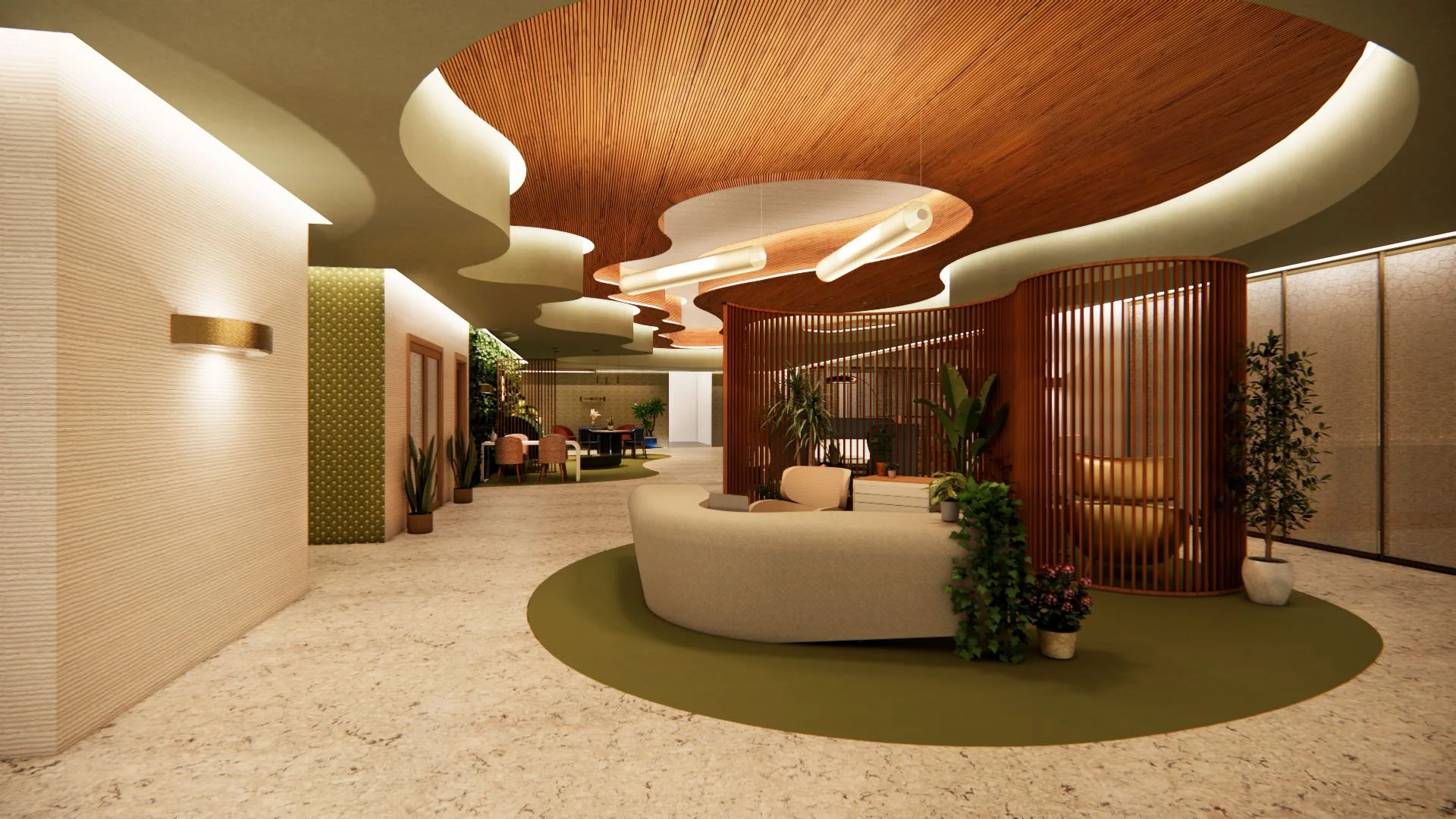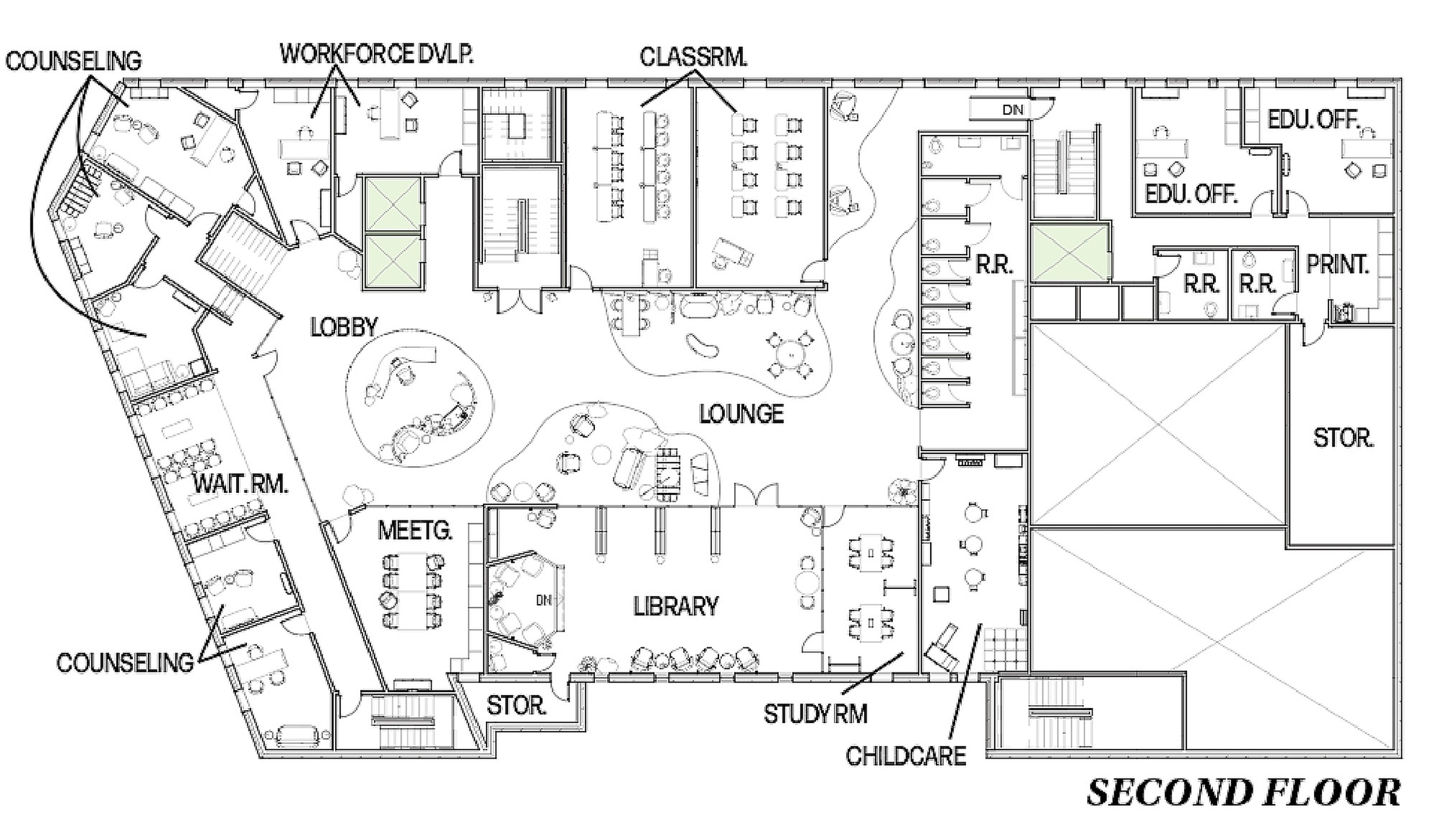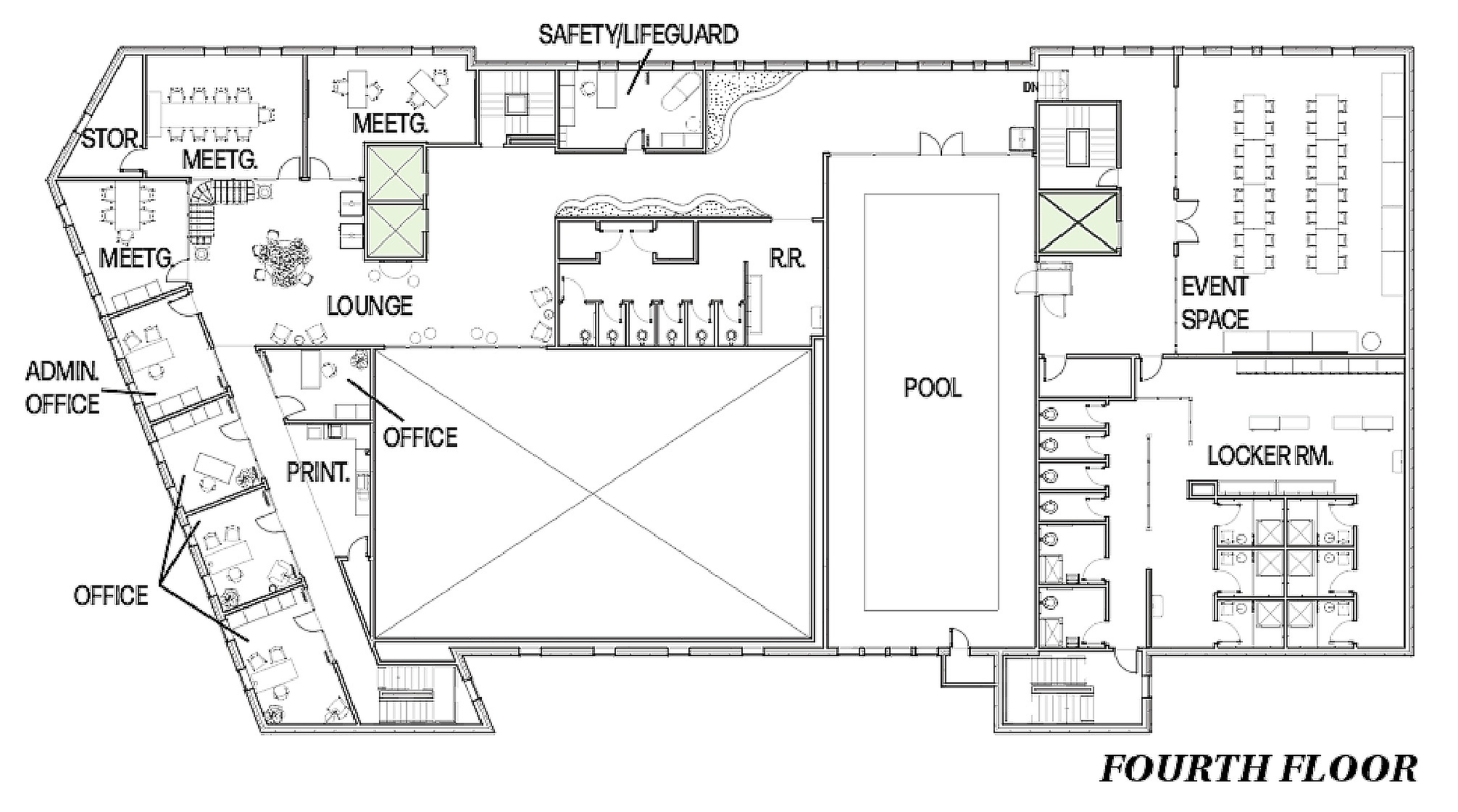Make it personal.
Personalized design is essential in trauma-informed interiors because every individual carries a unique history, set of triggers, and ways of feeling safe in a space. Rather than relying on one-size-fits-all solutions, trauma-informed design intentionally tailors lighting, layout, material choices, and sensory conditions to support each person’s comfort and autonomy. By centering the user’s lived experience, personalized design helps create environments that not only reduce stress and overwhelm but also foster empowerment, dignity, and a genuine sense of belonging.





This project transforms a former corrections center into a welcoming community resource designed to support the healing, empowerment, and reintegration of formerly incarcerated individuals. The concept centers on replacing the building’s history of rigidity and confinement with an environment rooted in dignity, softness, and renewal. Organic forms, flowing circulation, and biophilic elements guide users through the space in a way that feels natural and intuitive, counteracting the institutional qualities often associated with carceral environments. Warm wood tones, living plant installations, and gentle, indirect lighting establish a calming sensory experience that fosters emotional regulation and reduces potential triggers. A thoughtful mix of open communal zones and semi-private retreats gives users agency—allowing them to choose spaces that align with their comfort level, whether for connection, quiet reflection, or support services. Through these intentional design strategies, the space becomes not just a functional community hub, but a physical expression of hope, restoration, and the belief in every individual’s capacity to grow and thrive.


